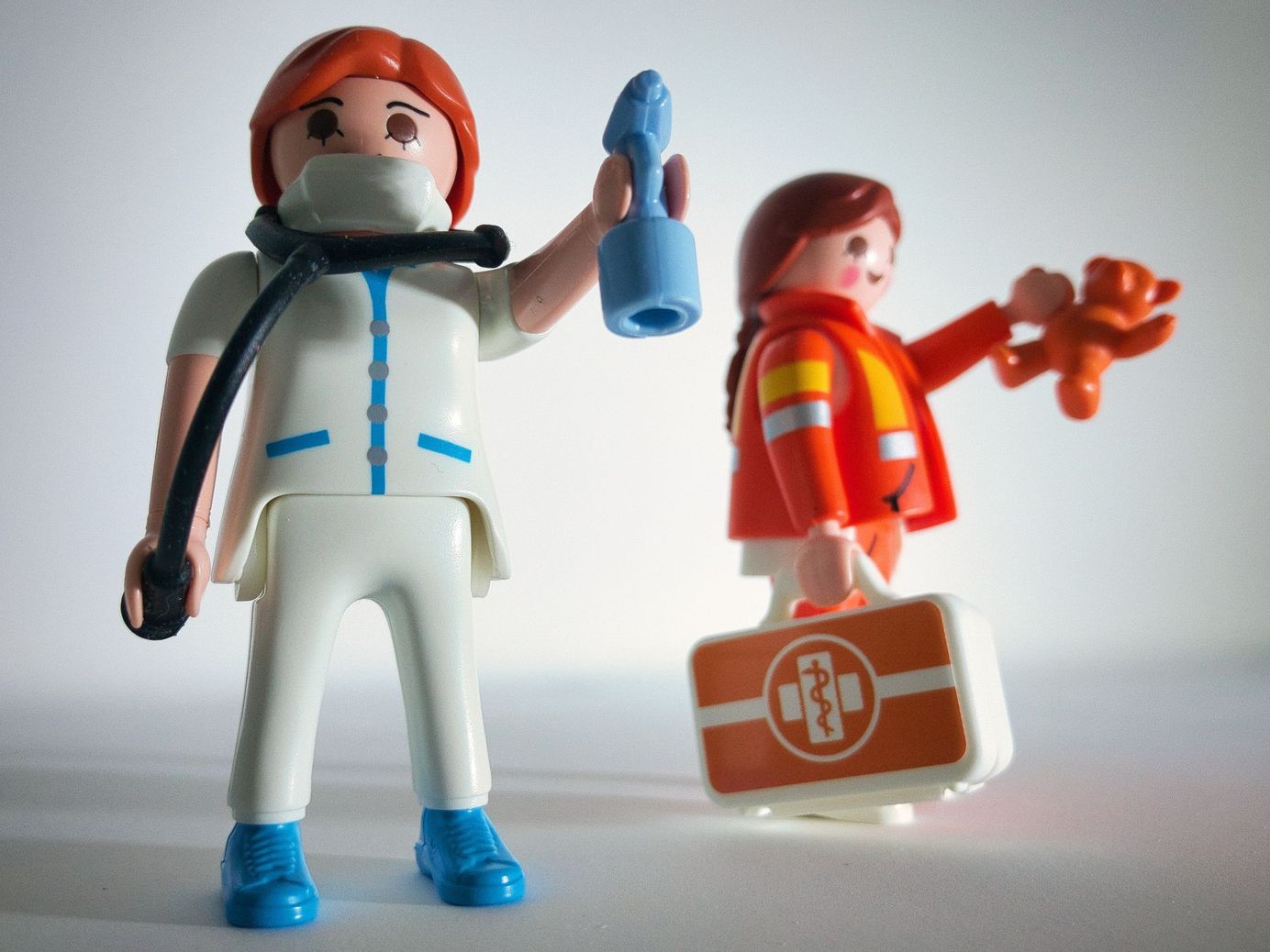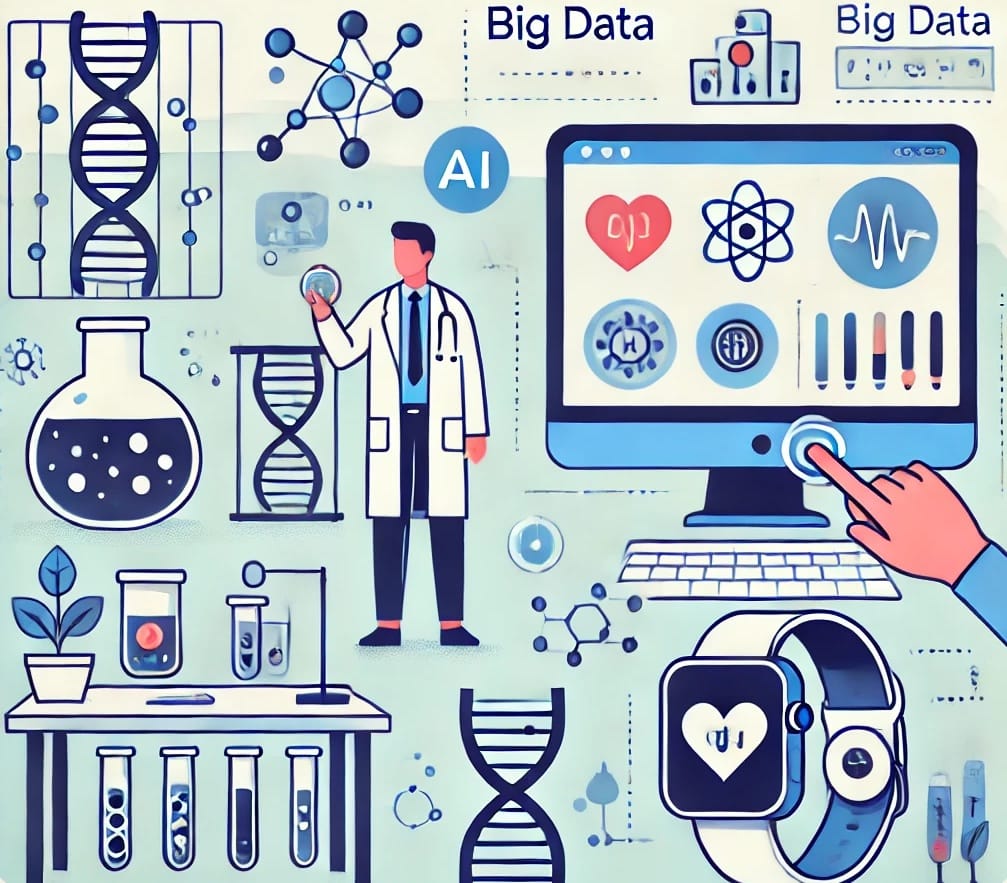
Exponential Medicine: The Longevity Industry 2.0
Contrary to the expectations of a world free of mortality, the goal of the longevity industry is to predict diseases while giving hope for a world without age-related diseases.
“So aging is really just the way we deteriorate over time. Lifespan on the other hand is how long we live. We typically refer to that as longevity.” (David Andrew Sinclair)
In the previous article of the health longevity series, longevity medicine was presented as the novel branch of medicine aimed at detecting early biomarkers of age-related diseases through advanced technologies such as artificial intelligence and machine learning. Moreover, besides innovative treatments to reverse aging, positive emotions, dietary restrictions, and the need for healthy habits were also discussed toward the evolution of a longevity mindset to proactively translate aging into an opportunity.
In this article, the growth of the longevity industry is explored. Hence, to reverse aging, the latest research in the field of exponential technologies preventive and regenerative medicine are presented. Therefore the importance of investing in this industry for the future of healthcare is discussed.
From Longevity industry 1.0 to 2.0
From 2010 to 2020, the past ten years saw the evolution of the longevity industry 1.0 and rapidly becoming one of the most complex industries in human history. In the book of Dmitry Kaminskiy and Margaretta Colangelo, the growth of the longevity industry is described covering each sector, such as longevity politics and governance, the financial longevity industry (e.g., AgeTech, WealthTech, FinTech), and in which the hope was anchored to the understanding of aging as a global social concern which needs attention and resources. Furthermore, looking at the next five years, a prediction of future perspectives are discussed, including the global industrialization of longevity to scale. From a hope, this event turns into reality from hope and translates into the longevity industry 2.0; an industry characterized by AI-driven technologies, preventive medicine, novel financial and InvestTech solutions, longevity MegaHubs, innovative biotech startups, and multi-trillion longevity corporations.
The growth of the longevity industry
With the increasing shift toward the aging population worldwide, this event's effect on the global economy is considerable. Thus, investing in the longevity industry would be the solution to promote healthy longevity. In Singapore, Japan, and the UK, the longevity industry is evolving its expertise in several fields from biotechnology, artificial intelligence (AI), and finance. However, although recognizing the importance of moving the perspective from reactive to proactive and preventive healthcare, while relying on supportive environments and the discovery of groundbreaking anti-aging treatments, this industry will develop at a slower rate than the current process of aging [1].
Based on the World Health Organization (WHO) 2015 World Report on Aging and Health, the public approach to aging is not effective, as it should be. Indeed, even in most developed and high-income countries, the healthcare system is not prepared to support the increasing rate of elders, and even public health measures and social contexts prevent the agers from participating. However, to promote healthy longevity, investing in care facilities and services, accommodating age-friendly environments, would be needed to enhance autonomy among elders. Therefore, assistive technologies, or “agetech”, are tools to sustain elders in managing their daily living activities, autonomously. Among these, there are technologies to monitor cognitive functions, networking apps to socially connect from home, or operations to deliver medications [1].
A report published in 2019 by Ageing Analytics Agency, co-founded by Dmitry Kaminskiy, discussed those actions that Singapore took in response to the increasing aging rate. Early in 2015, Singapore’s ministerial committee for aging promoted a preventive action plan including a multi-pronged approach to foster healthy aging beginning at the age of 40. Meanwhile, Singapore supported the development of AgeTech technologies to ameliorate the social engagement and life quality of elders. Indeed, these technologies were already adopted by medical providers, while rapidly growing interest in the longevity industry. However, even though Japan is well-known for its long life expectancy population, the country is also challenged by an increasing rate of dementia. In particular, it is estimated that one in five individuals over the age of 65 would suffer from memory decline by 2025 [1].
Moreover, whether the longevity industry aims to provide solutions to slow or even reverse aging, on the other side this industry aims to transform aging from being a “disease” into an opportunity in which health extension adds wellness to years of life. Thus, scientific research is focused on preventive medicine, while investigating the mechanisms underlying the aging process and age-related disease development. This would turn into a promising health scenario and also be assisted by disruptive medical technologies, reducing the burden on the entire healthcare system, from hospitals, nursing homes, caregivers, and any other stakeholders [1].
Even Fortune 500 companies invested in preventative medicine and funding research on aging and innovative treatments. Indeed, already in 2016 Mark Zuckerberg, founder of Facebook announced the donation of $3 billion to cure, prevent, and manage 21st-century age-related diseases. Similarly, Alphabet, a company created through Google, in collaboration with its biotech company Calico, has been focusing on the study of aging since 2013 [1].
In 2018, a report from Citi, one of the world’s biggest financial institutions operating in major already well-established and emerging markets, declared that the anti-aging industry is worth $200 billion. However, the current anti-aging market is limited to cosmetics, although the rapid evolution of research would put therapeutic products on the market in the coming years. One example is the US startup biotechnology company called Unity Biotechnology, which is developing senolytics drugs created to destroy senescent cells (responsible for aging), or those cells unable to replicate or divide anymore [1]. Besides, even the growing research development and involvement of AI technologies in age-related diseases would definitely speed up the commercialization of outbreaking treatments.
Nevertheless, fostering research in preventive and regenerative medicine requires high costs, but also the demographic change toward the aging population has an undeniable effect on the global economy. Indeed, promoting health longevity would translate into a population capable of working for a longer-term period, thus supporting the growth of the worldwide economy.
Why invest in the longevity industry?
Contrary to the expectations of a world free of mortality, the goal of the longevity industry is to predict diseases while giving hope for a world without age-related diseases. Thus, longevity businesses are mostly biotech companies aimed at investigating the mechanisms of aging to produce promising treatments. Hence, these treatments are aimed to delay or stop disease development but also the process of aging while reinforcing the metabolism against structural and functional damage by stimulating repairing and rejuvenating mechanisms. Studies based on animal models have found that senolytic drugs can delete senescent cells, with the perspective of translating this outcome in humans. Already working on advances to address aging, more than a hundred startups in the field of biotechnology are investing resources in innovative projects to support health longevity [2]. Besides, even research institutes are concentrating their focus on the topic, and even earlier than most industries. A good example is the Buck Institute for Research on Aging, the most famous worldwide research center on aging and associated diseases established in 1999.
Regenerative medicine and innovative treatments
A great field of research in which the longevity industry is investing in regenerative medicine, a term coined by the futurist Leland Kaiser back in 1992. Indeed, about $10 billion have been invested in 2019 and is expected to increase, surpassing $151 billion by 2026. However, whether Big Data and AI-driven technologies aim to the development of innovative methods and procedures to predict age-related diseases over large datasets, the aim of regenerative medicine is to replenish, replace, and rejuvenate the human body and functionality [3]. Hence, these are the three goals of regenerative medicine, dubbed “the three Rs”.
Replenish
This branch of regenerative medicine focuses on stem cells to regenerate the body. Indeed, the global market is expected to increase reaching $14.8 billion by 2022. Stem cells can transform into specialized cells (e.g., heart, neurons, liver, lung, skin…) and they can be divided to produce even more stem cells. However, whether these cells are mostly available in large quantities during childhood and young adulthood to repair sites of damage or inflammation, they tend to decrease with aging besides genetic mutations which reduce their functionality. Thus, the possibility to restore stem cells would be the solution to regenerate and repair the human body, even in late adulthood. Indeed, one option was to extract those cells from fat tissue or bone marrow, but these adult stem cells might have already undergone mutations. Therefore, the extraction of newborn stem cells from the placenta or umbilical cord would be a more promising solution to rejuvenate and repair [3].
Besides the implementation of these cells to reduce inflammation, enhance muscle mass, repair joints, grow hair and skin, the great potential of stem cells regards their implementation as treatment options for a variety of diseases. Indeed, research already showed positive results in re-growing retinas, corneas, or improving motor functions in stroke patients. Furthermore, this method based on stem cells might even treat neurodegenerative disorders such as Alzheimer’s, Parkinson’s, or ALS. In addition, based on recent findings, the capability of this approach has been successful in restoring sensation and motion in a paralyzed patient, and in curing a patient affected by HIV [3].
When it’s about the industry, the clinical-stage biotechnology company Celularity was announced in 2017. Celularity aims to lead the next evolution in cellular medicine by developing off-the-shelf allogeneic cellular therapies targeting cancer, immunologic, infectious, and degenerative diseases. Moreover, Celularity takes the advantage of the powerful use of placental cells to boost health longevity.
Replace
In response to the increasing demand for organ donation, replacement and regenerative medicine would represent a great opportunity. Indeed, in 2020 the number of people waiting for replacement organs was over 112,000 and on average 20 people die each day while waiting for a transplant [3]. Thus, regenerative medicine is the promise to replace and repair damaged tissues or organs. In this regard, 3D bioprinting is rapidly developing into a bio-manufacturing technology characterized by high precision and resolution, individually designed for patients. Moreover, thanks to its technological property can recreate the mechanical and biological functionality of target tissues and organs. A review by Cui et al. (2017) [4] reported recent findings in 3D bioprinting technologies and main principles while focusing on describing their applications in 3D printed living organs, vasculature, neural networks, the heart, and liver.
The printing organs and tissues involve a multidisciplinary team of experts from biology, engineering, computer science, and medicine that collaborate in a long-term perspective to overcome the limits and complexities of this approach. However, due to specific technical, material, and cellular features of human organs and tissues, several challenges may be faced by 3D bioprinting technologies when customizing functional 3D organs/tissues.
- Firstly, the need for improved resolution, speed, the flexibility of 3D printers is increasing for generating optimal structures with appropriate biomaterials.
- Secondly, the importance of developing bioink formulations associated with cell sources should be considered when recreating tissues functions and their properties.
- Thirdly, while considering the complexity of organs and tissues structures, an adequate strategy of fabrication is quite relevant. Thus, to reconstruct different functional properties of organs/tissues, combining bioprinting methods, besides bioinks, should be fostered.
- Fourthly, also manufacturing during the bioprinting process is another challenge to reach a scalable production of living organs/tissues.
- Fifthly, post-bioprinting, in which printed structures undergo a series of processes becoming ready for implantation, is another challenge to be faced by 3D bioprinting technologies.
Nevertheless, their commercialization into the longevity industry market, high-quality control, regulatory procedures, and approvals are needed to guarantee the safely of bioinks, and bioprinters (e.g., from raw materials selection, design of 3D printing models, validation of manufacturing processes, software, product test, and implantation) translated into customizable 3D products. One example is Aprecia Pharmaceuticals’ SPRITAM® (levetiracetam), the first FDA-approved drug produced by using 3D printing technologies [4].
Nevertheless, even though this technology has already shown remarkable results in 3D printed functional organs, research is still working to overcome a few challenges in this field with the goal of translating the current limits into future realities.
Rejuvenate
Another great advance in regenerative medicine regards parabiosis; a rejuvenation method based on blood transfusion. However, although this technique sounds like a sci-fi scenario, parabiosis demonstrated that specific components from young blood might have a regenerative effect in diseases and aged tissues. Initially reported by Paul Bert in 1864 [5], parabiosis was lately developed by Bunster and Meyer in 1933 [6] who applied this procedure to survive animals. This technique allows blood circulation between two animals and presents a few advantages when compared to other methods such as bone marrow transplantation or cell injection. In addition, with the parabiosis method, it would be possible to investigate the role of circulating factors (e.g., cells, cytokines), from the blood transfusion, in healing, tumor formation, aging, regeneration, or inflammatory processes [7].
Since 2005, several research findings have discussed the anti-aging effect of this technique by connecting an aged mouse with a younger one. Indeed, in response to tissue degeneration, impaired stem and progenitor cells functioning observed in aging, these experiments showed that the circulation of young factors into aged animals could activate molecular processes in hepatic, muscle, or neural stem cells while leading to tissue regeneration. Moreover, a few studies have identified that some components such as the chemokine CCL11, the growth differentiation factor 11, a member of the TGF-β superfamily, and oxytocin would be responsible for the observed rejuvenating effects. However, still doubtful is whether the process of rejuvenation can be achieved by circulation of the whole blood or just specific components [8]. In addition, parabiosis method improvements were also suggested by Kamran et al. (2013) [7] who designed a novel protocol to investigate parabiosis in mice, that significantly improves what previously Bunster and Meyer elaborated, with low mortality rates or infection risks.
Despite the safety of blood transfusion and its potential in regenerative medicine [9], the possibility of side effects should also be considered when transfusing blood factors (e.g., plasma proteins, leucocytes, red cell antigens, plasma, and pathogens) that may cause simple allergies but also more adverse effects [10]. Furthermore, although this method found promising results in animal models, more experiments and clinical trials are needed in humans to detect which specific blood derivatives might be more indicated to treat and rejuvenate specific diseases [8].
And what about translating parabiosis into the industry? A startup based in San Francisco, called Ambrosia, was recently launched by Jesse Karmazin to initiate trials on parabiosis. However, although positive results were observed in animals to reverse aging, the FDA doubted the safety and effectiveness of this method in humans due to the lack of clinical data [3]. Moreover, from Harvard University and with a stronger validated approach, Elevian is another startup funded by Mark Allen. Indeed, it was found that the injection of a molecule called growth differentiation factor 11 (GDF11) was effective in decreasing the impact of age-related diseases. Thus, Elevian is aimed to design treatments based on GDF11 as a promising approach to age-related impairments, while becoming the outbreaking solution in regenerative medicine and health longevity [3].
From genes to drugs: the future of longevity
Besides regenerative medicine, the future of the longevity industry is investing in emerging biotech startups working in advanced technologies such as genome sequencing and editing, senolytics, and nutraceuticals treatments.
Indeed, in the last decade, genome reading and editing have dropped their costs. Thus, Big Pharma and small businesses are now aiming to discover innovative solutions to fight aging and related diseases, from the perspective of healthy longevity.
Gene editing and CRISPR
Accordingly to Moore’s Law, if the cost of sequencing the human genome was $3.7 billion in 2001, it exponentially dropped to $10 million in 2006, and even more to $1,500 in 2015 [11]. Today, with just $600, a genome sequence can be done, as mentioned by the most famous gene sequencing company Illumina, with a cost reduction of $100 in the cooking years. Nevertheless, despite the price of this method, genome sequencing is a very promising and powerful technique applicable in healthcare. Indeed, it means that it would be possible to personalize nutrition, medications, supplements, besides the identification of an individual’s microbiome, gut flora, or even which treatments might be harmful or not effective based on the individual genetic code. But also, genome sequencing would even allow the understanding of disease development, related mechanisms, and how to prevent this to happen.
In relation to the genome, nowadays a gene-editing technique called CRISPR/Cas9 was found to be the most accurate, effective, and cheap method compared to previous techniques. Indeed, initially discovered in 1987, several studies on animals demonstrated its efficacy in potentially treating diseases such as Duchenne muscular dystrophy (DMD), or to cure cancer in humans. Thus, despite the rise of ethical concerns due to its application in embryos, the potential of this technique to treat Alzheimer’s and other so far incurable diseases would represent a breakthrough in the field of medicine [11].
For more insights and details regarding this method, I invite you to read my previous articles about recent outstanding CRISPR applications and future directions.
Senolytics and nutraceuticals treatments
Another recent trend under investigation regards senolytic drugs, able to regulate senescent cells, and thus reverse aging. Indeed, senescent cells have been identified as one cause of aging, and responsible for age-related diseases mechanisms such as inflammation and diminished lung function, fibrosis, and blood vessel calcification.
Thus, the longevity industry is already fostering biotech startups working on developing senolytics drugs. The most known companies are Unity Biotechnology, Oisin Biotechnologies, or SIWA Therapeutics, and each focused on a different application of these treatments in senescent cells [11].
Most recently, two senolytic compounds have been found capable of regulating the mechanisms underlying these senescent cells. Hence, already in use as organ and bone marrow transplants, Rapamycin was shown to respond on the mTOR (mechanistic target of rapamycin) pathway to block a specific protein responsible for cell division. In addition, Rapamycin might be implemented to boost cognition and the immune system. When talking about business, PureTech Health is already working on Rapamycin to improve immunity and infection reduction [11]. Furthermore, Metformin is another drug that controls the level of sugar in the liver in patients affected by Type II diabetes. Besides, Metformin was also found to decrease the oxidative stress and inflammatory processes caused by aging, while augmenting the possibility of Metformin implementation to reduce the negative effect of senescent cells. Lastly, aging is also accompanied by decreased nutrients. Indeed, Nutraceuticals have been proposed as the alternative to pharmaceuticals to restore nutrients while coping with deterioration. Thus, the scope of Elysium Health Basis is to increment the levels of NAD+ to restore essential cellular processes, which tend to decline with age [11].
My final thoughts on health and longevity
In response to the global underpopulation event and the increasing shift toward aging, I started the health longevity series with two questions from Peter Diamandis. “How would you change your life if you could live to 120 years old and remain healthy?” and “what would you do differently today?.” Slowing aging proved to be beneficial not only for the individual’s well-being but also for the possibility of improving a healthy lifespan, which would represent a great societal and economic value worldwide while benefitting public health. Thus, the need to evolve a longevity mindset means a proactive behavior made of healthy habits, such as dietary choices, exercise, positive attitude, and sleep that would positively affect our lifespan. Besides, advances in preventive and regenerative medicine, supported by exponential technologies, contributed to support this process while defining a novel branch of medicine called indeed “longevity medicine.” Therefore, groundbreaking research in the field, demonstrated that along with the detection of early-onset biomarkers of age-related disease, reverse aging is possible. The investment in the longevity industry becomes necessary for response to the demographic change that will affect the resources of our planet and the future of the next generations worldwide. Even though scientific innovations such as gene therapies to rejuvenate, novel drugs, and vaccines to treat diseases, AI and ML methods to detect biomarkers, the future of health longevity starts within our mindest and actions. What we choose to be and do today, will define who and how we are tomorrow. Thus, we would really say that 100 years old will be the new 60! Let’s stop comparing aging with mortality and diseases. Instead, let’s transform this unavoidable event into an opportunity to cultivate health with positive, wiser, and forward-looking thinking.
“I really feel better about aging at the age of 86 than I did at 70.” (Donald Hall)

References:
- Goldsmith, C. (2019). The longevity industry comes of age. The New Economy. Available at: https://www.theneweconomy.com/business/the-longevity-industry-comes-of-age [Accessed on December 30, 2021]
- Fighting Aging (2021). Investment in the Longevity Industry is Growing. Fighting Aging. Available at: https://www.fightaging.org/archives/2021/02/investment-in-the-longevity-industry-is-growing/ [Accessed on December 30, 2021]
- Diamandis, P. H. (2020). The Three R’s of Regenerative Medicine. Available at: https://www.diamandis.com/blog/regenerative-medicine [Accessed on December 30, 2021]
- Cui, H., Nowicki, M., Fisher, J. P., & Zhang, L. G. (2017). 3D Bioprinting for Organ Regeneration. Advanced healthcare materials, 6(1), 10.1002/adhm.201601118. https://doi.org/10.1002/adhm.201601118
- Bert P. Expériences et considérations sur la greffe animale. Journal de l'Anatomie et de la Physiologie. 1:69–87.
- Bunster E, Meyer RK. Improved methods of parabiosis. Anat. Rec. 1933;57:339–380.
- Kamran, P., Sereti, K. I., Zhao, P., Ali, S. R., Weissman, I. L., & Ardehali, R. (2013). Parabiosis in mice: a detailed protocol. Journal of visualized experiments : JoVE, (80), 50556. https://doi.org/10.3791/50556
- Conese, M., Carbone, A., Beccia, E., & Angiolillo, A. (2017). The Fountain of Youth: A Tale of Parabiosis, Stem Cells, and Rejuvenation. Open medicine (Warsaw, Poland), 12, 376–383. https://doi.org/10.1515/med-2017-0053
- Corigiano M, Ciobanu G, Baldoni E, Pompa G. Biochemical assessment of growth factors and circulation of blood components contained in the different fractions obtained by centrifugation of venous blood. J Biol Regul Homeost Agents. 2014;28:301–315.
- Basu D, Kulkarni R. Overview of blood components and their preparation. Indian J Anaesth. 2014;58:529–537
- Diamandis, P. H. (2020). Longevity & Vitality - A Renaissance of Drugs and Genomics. Available at: https://www.diamandis.com/blog/longevity-drugs-and-genomics [Accessed on December 30, 2021]

ExO Insight Newsletter
Join the newsletter to receive the latest updates in your inbox.









